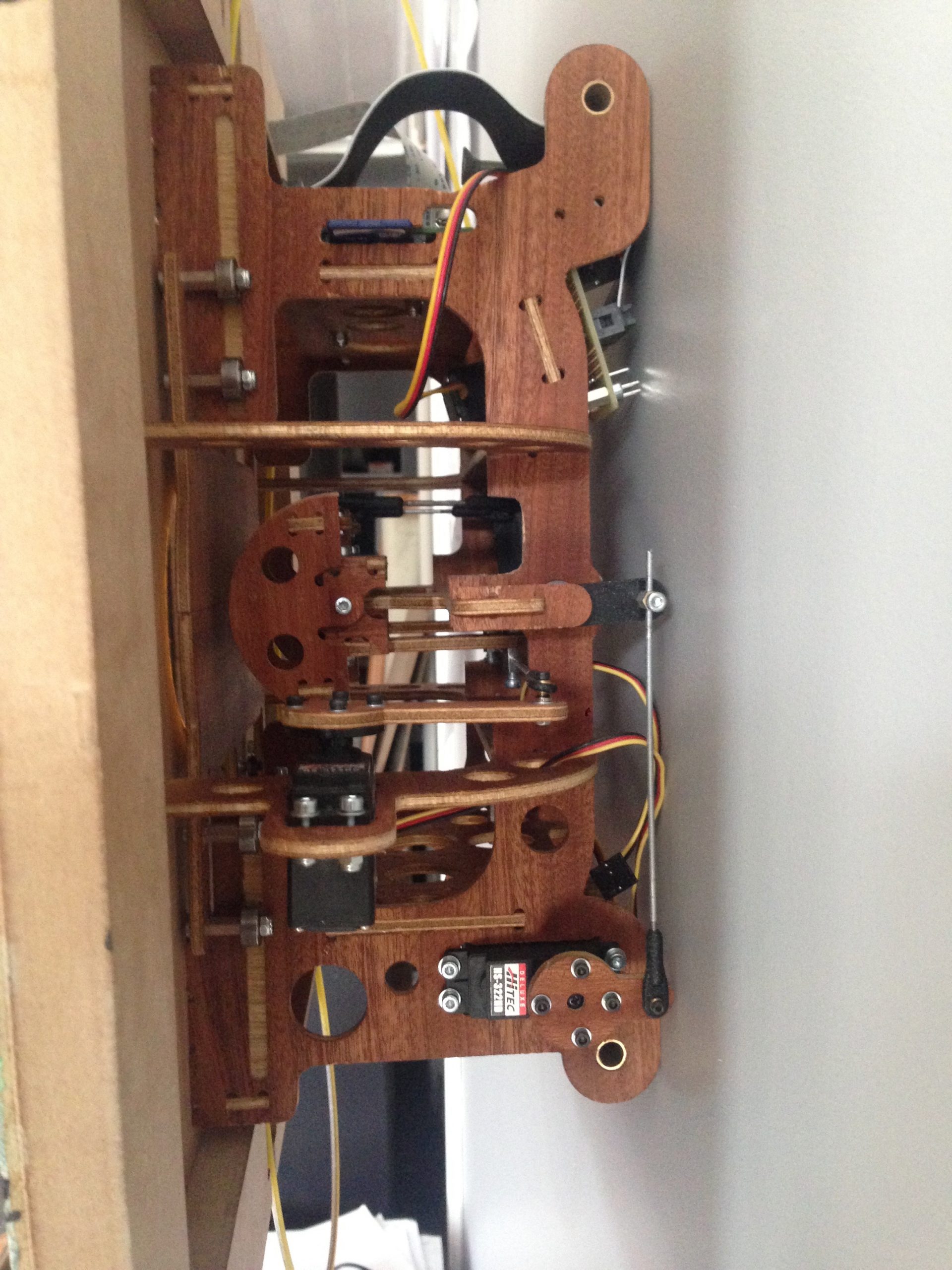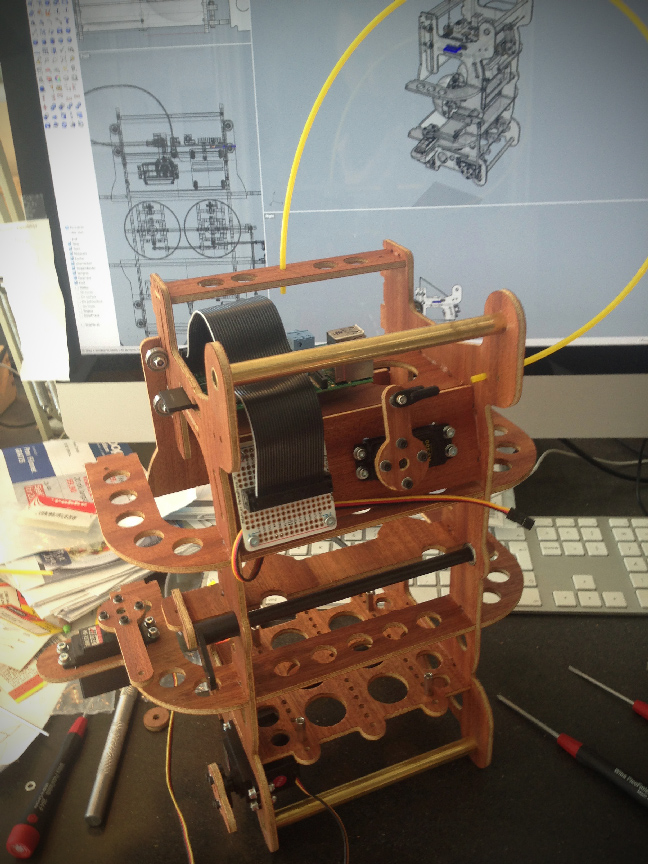
PAPP ON GREEN
HILDE & BÅRD TØRDAL | 2014 | H500 X W500 X D280 MM | WOOD, PAINT, ELECTRONICS, ELECTROMECHANICS, 3D-PRINTED PLA/PHA
On the occasion of Pictoplasma’s 10th anniversary we were invited to participate in their Portrait Exhibition which opened in the abandoned Kaufhaus Jandorf in Berlin. The exhibition later traveled to the Museum of Contemporary Art Monterrey, Mexico where it was on show from 18. Sept. 2014 to 08. Feb. 2015.
We wanted to look back on our robot Papp, which was our debut at Pictoplasma, and make a classical painting of the character – a mix of pop culture references like the palette from The Simpson combined with a journey through art history where we revisited impressionism, expressionism and one of our favourites from art history the suprematism and Kasimir Malevich’s painting White on White.
CONCEPT & REFERENCES
The plywood canvas received a gesso base, and an impressionist style landscape painting was painted as a first layer to provide texture and depth of colour. A white coat followed which we “stressed”, revealing patches of the underlying landscape painting. Papp was then portrayed with a nod towards Malevich: as a square, floating or falling towards the left lower corner of the painting. Instead of Malewich’s white square we chose a yellow close to the famous skin tones used in the Simpsons. As a final touch we dripped and splashed high gloss black as a last layer to give that flair of “Pollockesque” expressionism. At completion the canvas had taken a journey through history starting with a 1700s base coat, an 1800s layer of impressionism, an early 1900s avant garde Suprematism style iconography and ending up in our own mix of cartoonish pop culture and 1960s action painting in the final layer,
Papp is an interactive sculpture so our goal was to make a living portrait. We built in a Raspberry Pi, and hid a pinhole video camera inside one of the smaller drops of black paint, running face recognition and face tracking software. The portrait was programmed to follow faces with its eyes, switch to a different person after a few seconds and to prioritise the faces of children. Two eye lids animated the portrait further, both as a blinking effect and to hide the eyes for longer periods.


IT’S ALIVE?
The frame was designed from the inside out – a single unit integrating all the different components of the painting: the outer framework, plywood canvas, animatronics and electronics.
This simple combination of face tracking software and animatronics gave an eerie feeling to the portrait which is difficult to understand properly without seeing it live.
Even though you know the painting is not alive you feel the connection to an animate object as a very physical thing: the eyes look straight into your own, following your every move.
The paintings switching of focus between persons looking at it enhances the feeling of a painting with intent and awareness of each individual standing in front of it.
PAPP ON GREEN
VIEW FROM THE MUSEUM OF CONTEMPORARY ART (MARCO), MEXICO:

ANIMATRONICS DESIGN
DESIGNED IN RHINO, ROUTED PLYWOOD, 3D-PRINTED PARTS, RASPBERRY PI:




